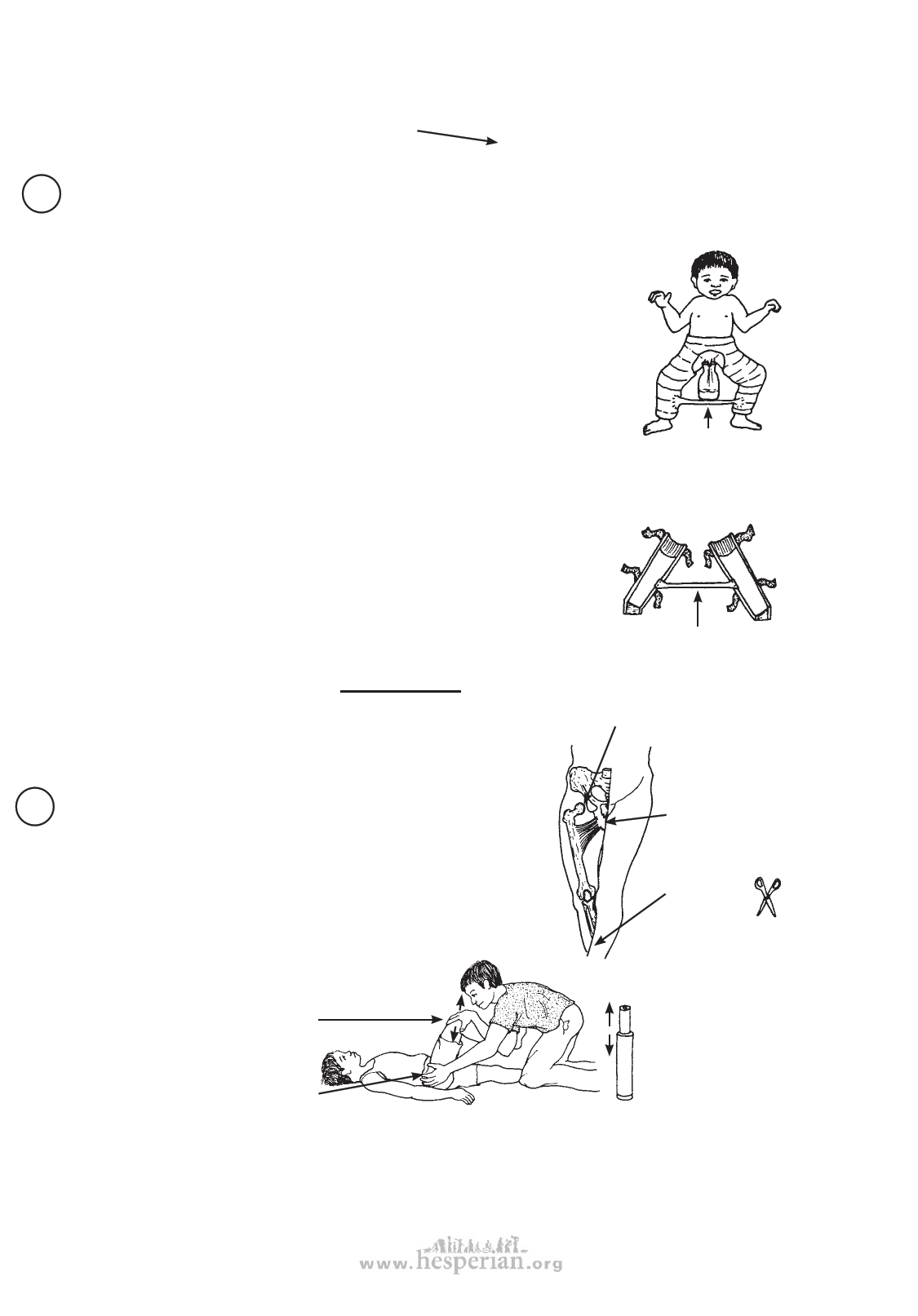
156 chapter 18
Dislocated hips with other orthopedic problems
Children with the disabilities listed here
often are born with dislocated hips. Therefore,
it is essential to examine these children
cp carefully a few days after birth, to make sure
there are no dislocations.
• Down syndrome
• spina bifida
• arthrogryposis
• cerebral palsy
• club feet
Many (but not all) dislocated hips can be corrected in the ways
CAST
we described on page 155. Keeping the legs wide apart during
the first months of the child’s life helps to improve the shape of
the socket.
If it is difficult to keep the legs apart, you may need to use
casts or make special braces.
The casts should be used for 2 to 4 months or longer,
depending on the child’s age (longer for older children) and the
amount of the deformity. (Use a cloth or bottle to catch the
baby’s pee, so it does not run inside the cast.)
bottle to
catch urine
Not all dislocations can be corrected in these ways. Some
need surgery, and in some cases the hip is so deformed that the
dislocation cannot be corrected, even with surgery.
BRACE
With spina bifida, if one hip is dislocated, surgery may help.
But if both hips are dislocated, hip surgery usually will not help
the child to walk any better. (See p. 173.)
•
Dislocated hips can also occur after the child is born,
either from an accident or as a complication of some other
disability—especially polio (due to weakness in the muscles
cp and cords that hold the hip joint together) or cerebral palsy
(due to spasticity and contractures).
THE TELESCOPE TEST
To find out if the hip is dislocated or can easily be
pulled out of joint, place the child on his back.
The stick here helps
to keep the legs apart.
DISLOCATED HIP
The spasticity
and contracture
of this
muscle cause
dislocation of
the hip.
legs crossed
like scissors
Pull up on his knee,
and then push it down, like this.
At the same time, feel his hip
with your other hand, like this.
If the thigh
bone moves
in and out like
a telescope,
the hip is
probably
dislocated.
Dislocations that are complications of polio or cerebral palsy can seldom be
corrected without surgery. But often it is better not to operate, because the
operations do not always turn out well, and the children who have the possibility of
walking will walk in spite of the dislocated hips.
Disabled village Children